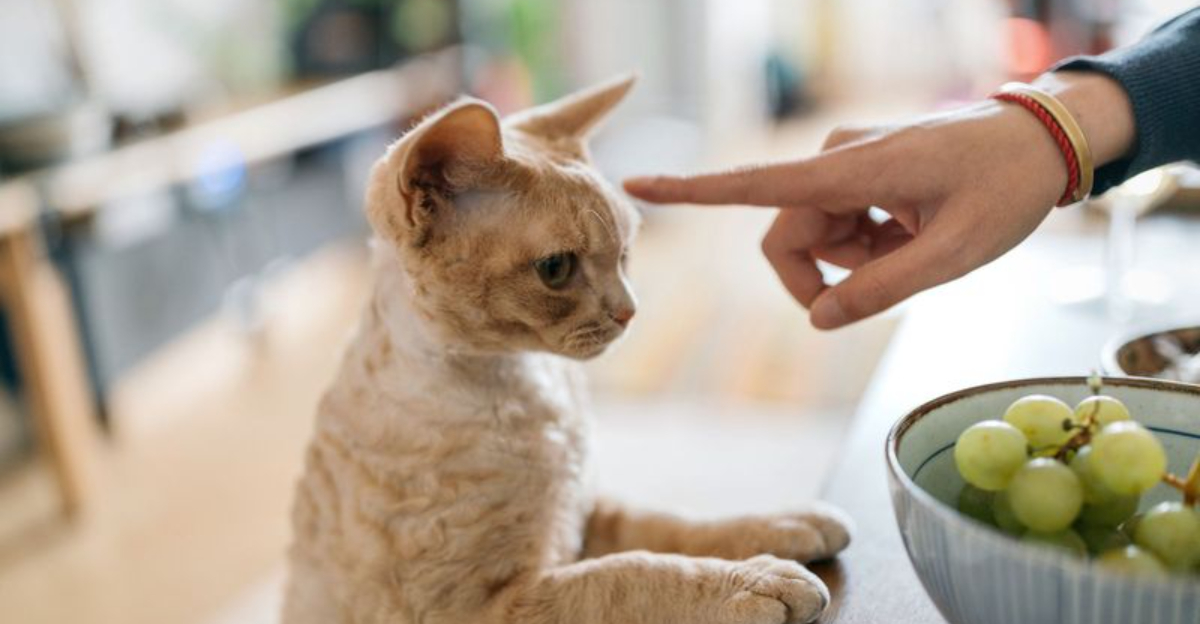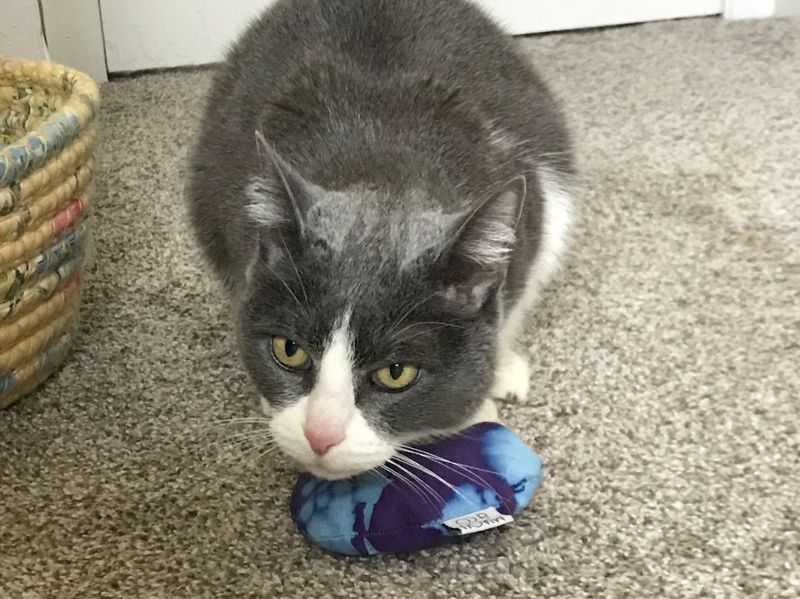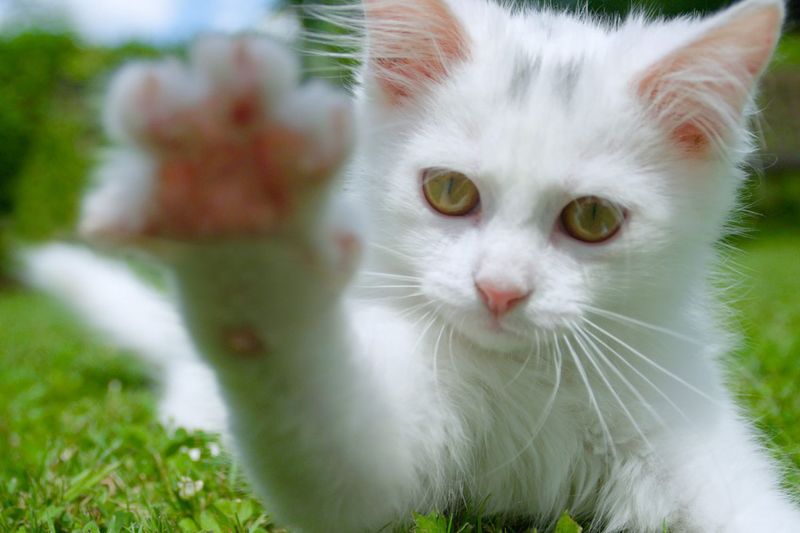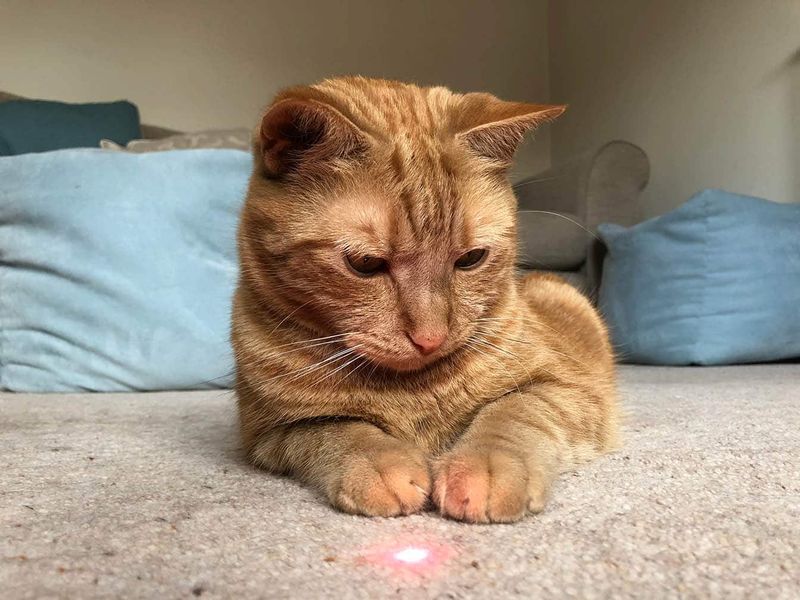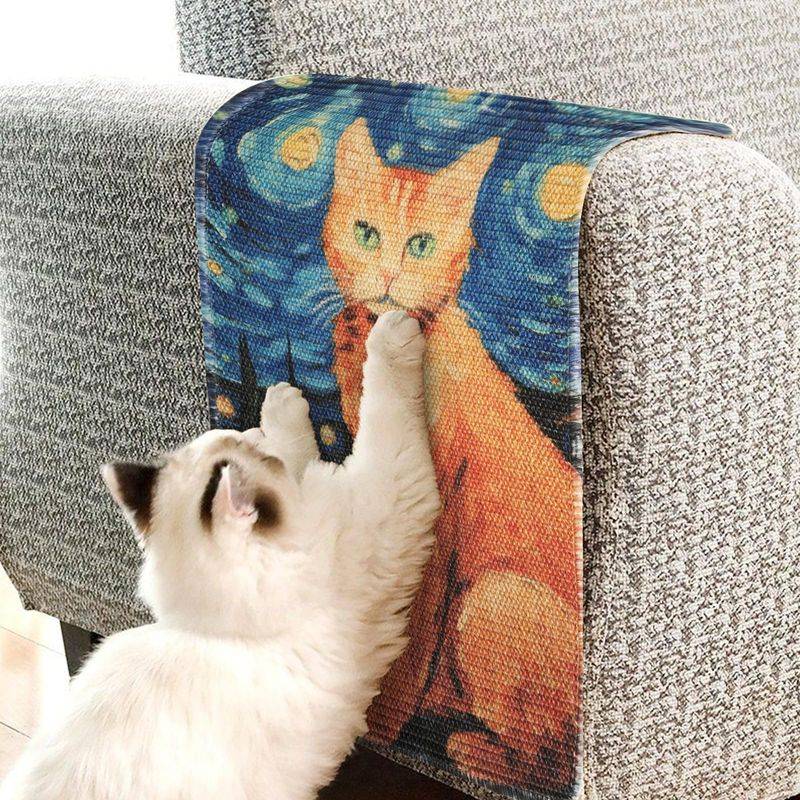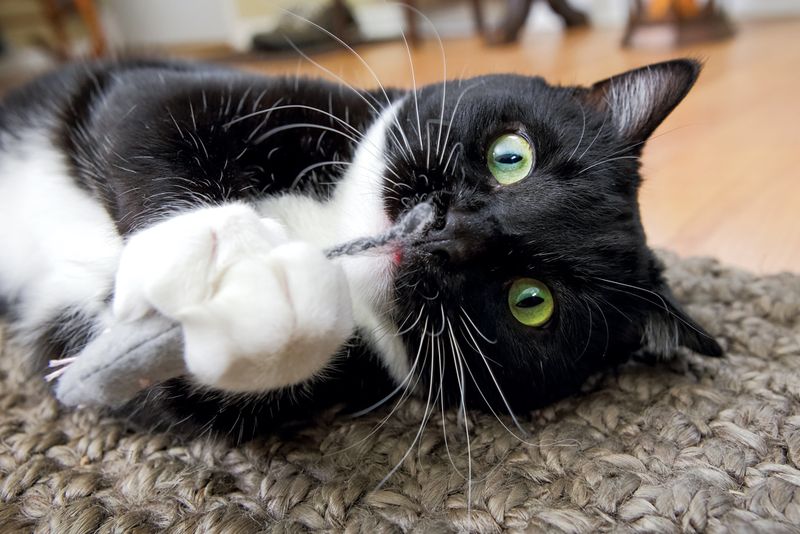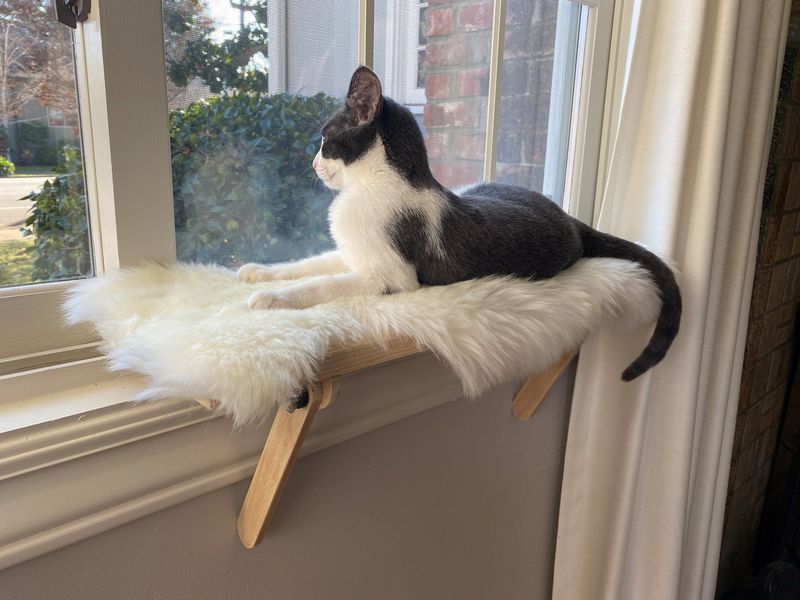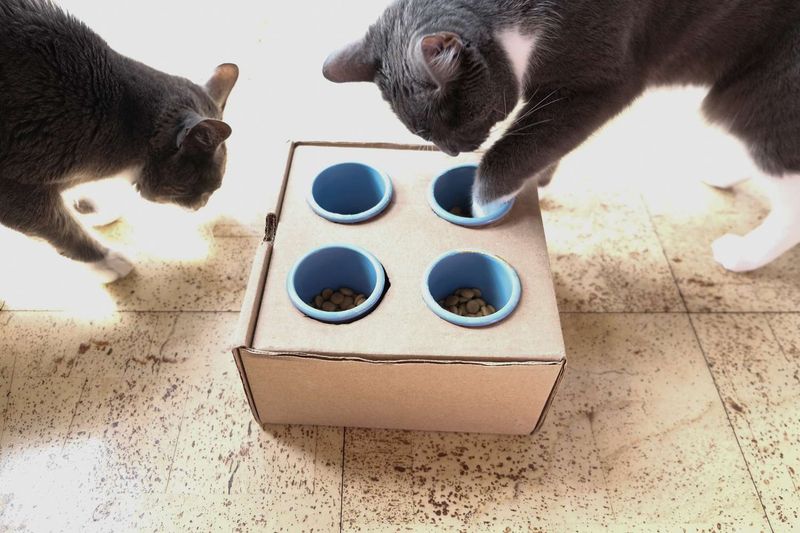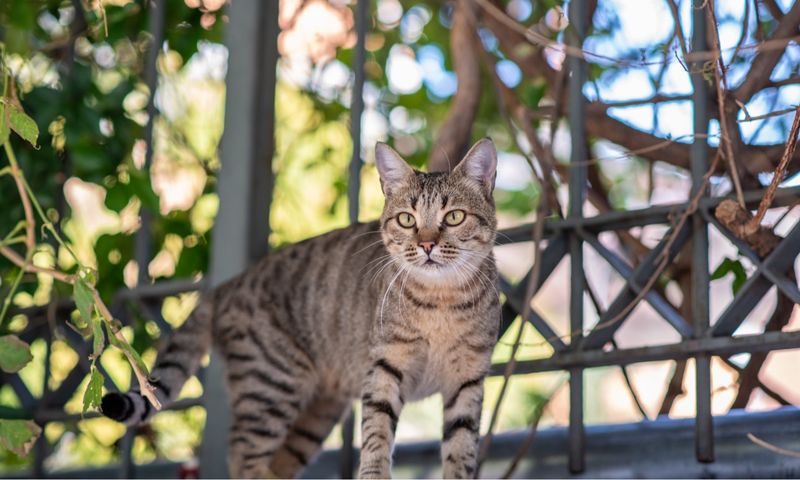📖 Table of Content:
- 1. Use Visual Toys
- 2. Incorporate Vibrating Toys
- 3. Teach Hand Signals
- 4. Use Light as a Cue
- 5. Create a Textured Environment
- 6. Engage in Gentle Touch Play
- 7. Offer Scent Enrichment
- 8. Use Floor Vibrations
- 9. Window Perches and Visual Stimulation
- 10. Puzzle Feeders and Treat Games
- 11. Safe Outdoor Time (on Leash or in Enclosure)
- 12. Create a Predictable Routine
Living with a deaf cat brings its own unique set of joys and challenges. While they may not respond to sounds or vocal cues, cats with hearing loss often compensate with heightened sensitivity in other senses—especially sight, smell, and touch. Understanding how to gently stimulate and engage your deaf feline can lead to a richer, more fulfilling relationship built on trust, creativity, and mutual understanding.
Traditional toys and commands may not work the same way, but that doesn’t mean your cat can’t enjoy play, bonding, or enrichment. In fact, these gentle, alternative forms of stimulation can actually enhance your bond and help your cat thrive emotionally and mentally. Whether your kitty was born deaf or lost their hearing later in life, adapting their environment and routine to suit their needs can be simple and deeply rewarding.
This guide outlines twelve thoughtful, non-auditory ways to enrich your cat’s world. Each suggestion focuses on gentleness, respect for your cat’s boundaries, and stimulation of the senses that remain. Let’s explore how you can turn daily life into a more engaging, comfortable, and joyful experience for your hearing-impaired cat.
1. Use Visual Toys
Bright and motion-driven toys can grab your cat’s attention even without sound. Consider using laser pointers, feather wands, or battery-operated toys that mimic the erratic movements of prey. These visual cues stimulate your cat’s hunting instincts while providing exercise and entertainment. It’s a good idea to rotate toys regularly to maintain interest and avoid overstimulation. Play sessions should always end with a tangible reward, like a treat or physical toy catch, to avoid frustration. When using lasers, be sure to never shine the light directly into your cat’s eyes. Focused and interactive play through visuals can create a new language between you and your deaf feline.
2. Incorporate Vibrating Toys
Some toys on the market emit soft vibrations when touched, offering a different kind of sensory engagement. Unlike loud or noisy gadgets, these provide a tactile experience that deaf cats can feel and explore. Try placing one near your cat’s favorite nap spot or adding it to their toy rotation. Vibrations can mimic the purring of another cat or the soft buzz of a hidden creature. These subtle motions can intrigue curious paws and noses, encouraging physical play. Supervise the first few interactions to ensure your cat is comfortable with the sensation. Over time, vibrating toys may become a comforting part of their environment.
3. Teach Hand Signals
Hand signals are an effective way to communicate with your deaf cat and build a shared vocabulary. Start with basic signals—like an open palm for “come” or a closed fist for “stay.” Use treats as reinforcement immediately after the desired behavior to create a clear connection. Consistency in gesture and context is essential for learning and retention. Over time, your cat may begin to recognize these signals just as reliably as a hearing cat might respond to voice commands. Patience is key, especially in the early stages of training. Developing visual communication not only stimulates the mind but also deepens the bond between you and your cat.
4. Use Light as a Cue
Lighting can serve as a gentle, non-invasive method of catching your cat’s attention or signaling routine events. Try flicking a light on and off before meals, or flashing a small flashlight to indicate playtime. These consistent visual cues can become reliable signals over time. You can also use light to guide your cat toward you or another area of the home. Cats are naturally drawn to movement and light, making this method intuitive and low-stress. Avoid overly bright or flashing lights that might startle them; soft transitions are best. Creating a visual rhythm in their day gives them structure and comfort.
5. Create a Textured Environment
Different textures underfoot or at paw-level can provide both curiosity and comfort to a deaf cat. Add soft rugs, sisal mats, fuzzy blankets, and cardboard scratchers throughout your space. These additions turn your home into a tactile playground where your cat can rub, scratch, or knead to their heart’s content. Texture can serve as a kind of “landmark” too—helping them navigate and feel grounded. Encourage exploration by introducing new surfaces periodically, or hiding treats among different textures. Cats often communicate and self-soothe through touch, making these changes especially enriching. A varied environment engages both mind and body gently and naturally.
6. Engage in Gentle Touch Play
Touch becomes one of the most meaningful forms of communication when sound is no longer in the picture. Use soft brushes, slow strokes, or even gentle massaging motions to interact with your cat. Always let your cat initiate or signal comfort first—consent is vital. Over time, these tactile sessions can become treasured moments of trust and affection. Physical contact not only calms anxiety but also stimulates their nervous system in positive ways. Grooming brushes with silicone bristles or mitts are great tools to enhance this interaction. Through mindful touch, you nurture security and reinforce your presence.
7. Offer Scent Enrichment
A cat’s nose is one of its strongest senses, especially when hearing is diminished. Scatter a few cat-safe herbs like valerian, silvervine, or catnip around their environment in controlled amounts. You can also create “scent zones” by rotating different smells on soft cloths or inside toys. Introduce each new scent slowly and observe your cat’s reaction—some may prefer calming aromas, while others enjoy something more stimulating. Scent-based play allows your cat to use their natural foraging instincts in a safe space. Try making scent trails with treats to lead them to a cozy bed or a surprise toy. Smell becomes a doorway to discovery.
8. Use Floor Vibrations
Subtle vibrations through the floor can alert your cat to your presence or transitions without startling them. A gentle stomp, rhythmic tap, or knock on a wooden surface is often enough. Deaf cats are often finely attuned to physical vibrations, which can be used as a “hello” or a signal. This technique also helps prevent startling when you enter a room or approach from behind. Incorporating this habit creates consistency and predictability for your cat. Make sure vibrations are soft and deliberate, never aggressive or abrupt. Tactile awareness becomes your shared signal system.
9. Window Perches and Visual Stimulation
Set up a cozy perch near a window where your cat can enjoy the outside world. Birds, passing cars, rustling leaves, and sunlight offer endless visual interest. This passive entertainment can be both calming and mentally engaging, especially for indoor cats. Add a bird feeder outside the window for extra excitement. A warm blanket or bed on the perch ensures comfort during long lounging sessions. Letting your cat visually explore the world offers a peaceful form of stimulation. It’s a simple yet powerful way to connect them with nature without leaving the safety of home.
10. Puzzle Feeders and Treat Games
Feeding time becomes playtime when you use puzzles or interactive treat dispensers. These toys challenge your cat’s paws and mind while offering a delicious reward. Choose clear containers or ones with moving parts to keep them visually stimulating. Start with simple puzzles and increase complexity as your cat learns. For deaf cats, these games offer engagement without the need for sound. They also reduce boredom and encourage slower, more mindful eating. Every solved puzzle boosts confidence and satisfaction.
11. Safe Outdoor Time (on Leash or in Enclosure)
Providing secure outdoor access can unlock a world of new sensory experiences. Use a well-fitted harness and leash, or a fully enclosed catio, to keep your cat safe. The scent of fresh air, texture of grass, and warmth of sun are all enriching in ways that don’t rely on hearing. Introduce outdoor environments gradually and observe your cat’s comfort levels. Keep initial sessions short and always supervised. With time, this can become a favorite ritual of exploration. Nature becomes an open-ended playground for their other senses.
12. Create a Predictable Routine
Structure and routine are grounding for any pet, and even more so for deaf cats who rely on consistency in non-verbal cues. Feeding at the same times, using visual signals, and having set play or grooming times all help establish security. Cats thrive on predictability, and it helps them feel in control of their space. Over time, your cat will begin to anticipate events based on time of day or visual stimuli. This predictability can also reduce stress and prevent behavioral issues. Routine doesn’t mean rigidity—it’s about creating a rhythm they can count on. Stability is a form of love your cat will feel deeply.
